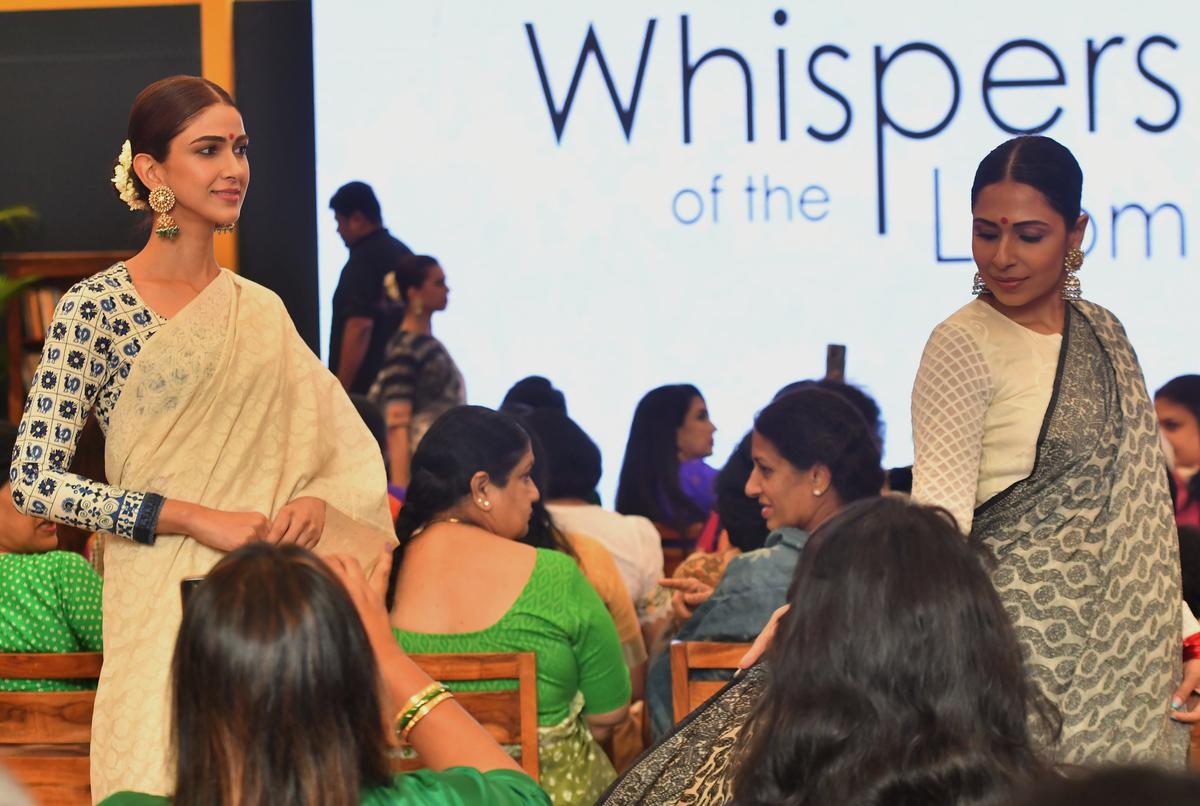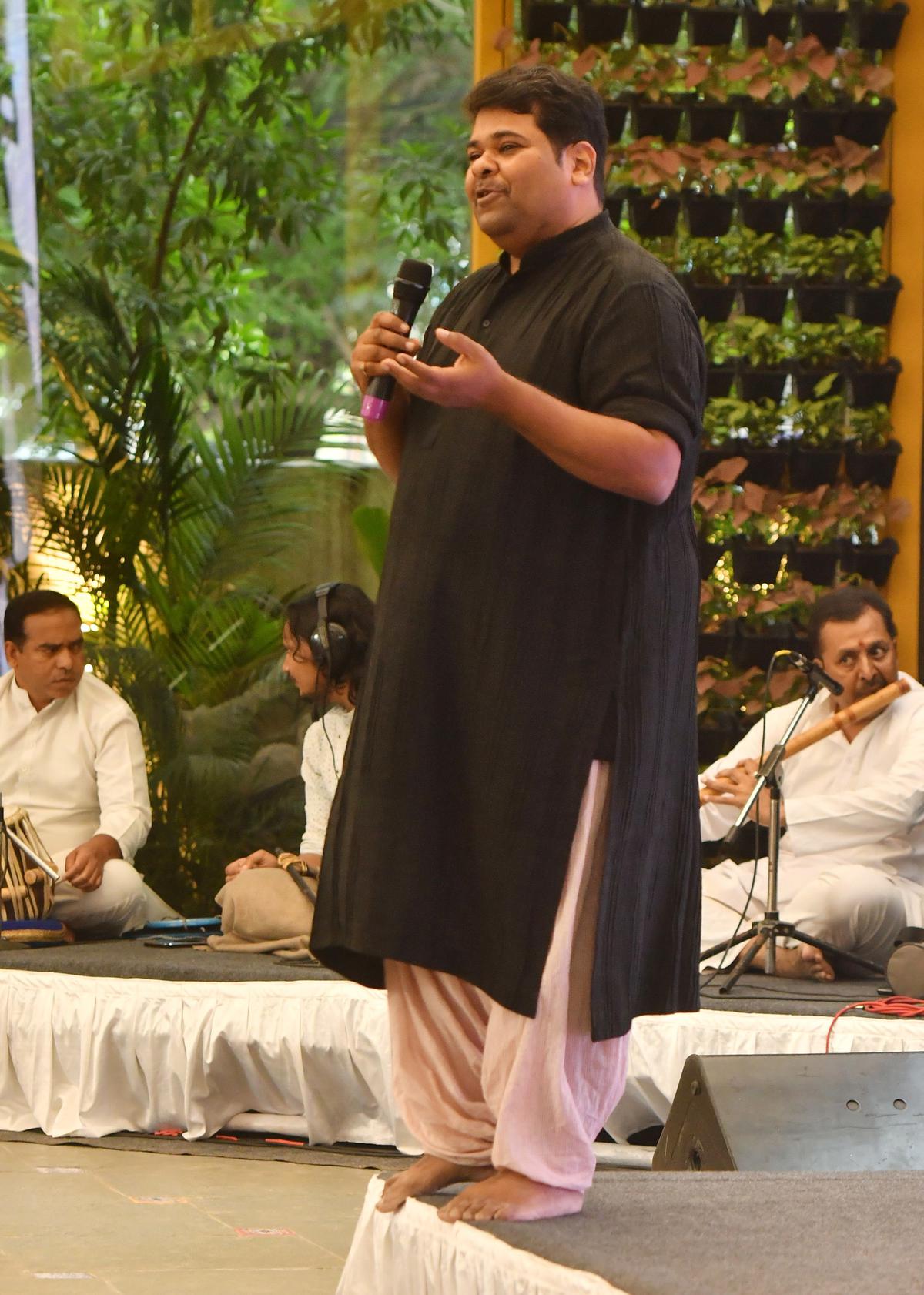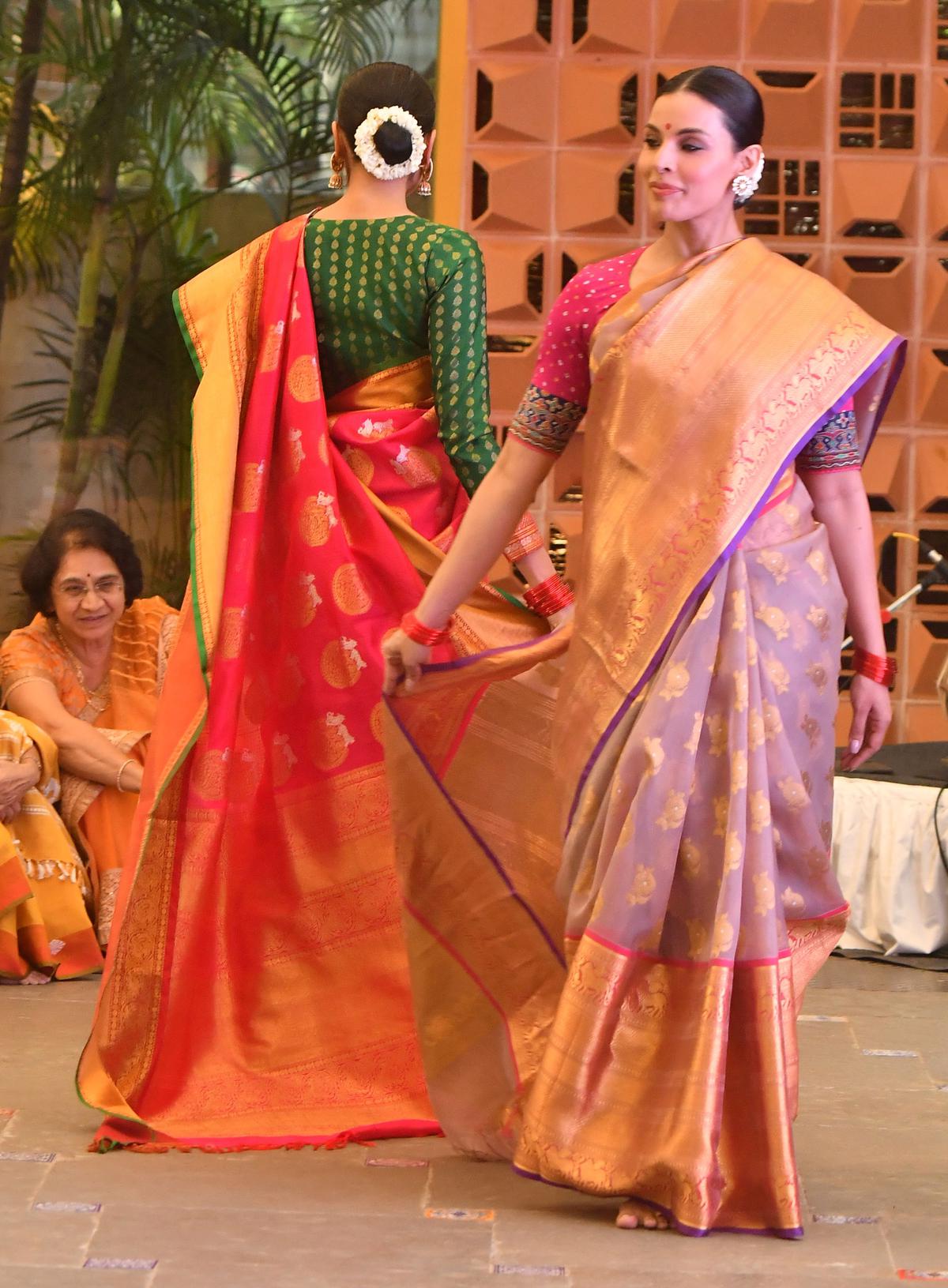
Hyderabad-based textile designer Gaurang Shah’s Whispers of the Loom showcased a wide range of handlooms from different pockets of India, to mark National Handloom Day on August 7.
| Photo Credit: Nagara Gopal
How well do we know our handlooms? A habitual wearer of handlooms or anyone with a keen interest in the sector would be familiar with terms such as hand spun, handwoven, warp, weft, shuttle, loom and can differentiate a Pochampally ikat from a Sambalpuri ikat. But the more we explore the intricacies of handlooms, we realise how little we know about our diverse indigenous weaves and crafts. To mark National Handloom Day on August 7, Hyderabad textile designer Gaurang Shah invited several of his clientele for a show titled Whispers of the Loom. Models wove through the gathering at the spacious Gaurang’s Kitchen in Jubilee Hills, wearing the finest of handloom saris, some of which took three to four years to weave. Gaurang interspersed the showcase with a multimedia presentation, offering insights into weaving techniques.
The presentation was intended to help the gathering, mostly women dressed in lustrous handlooms, appreciate the heirloom worthy saris. There were plenty of takeaways. The uninitiated learnt the difference between a weaving pattern (ikat) and a surface technique (kalamkari, bandhani, leheriya…). Those acclimatised to weaves from different regions looked at possible experimentations — can a Kanchi silk sari be given a Kota-like finish to make the sari lighter? Or, what happens when weavers in Kashmir are asked to work on khadi instead of wool, to cater to the South Indian market?

Reha Sukheja (left) showcases a fine muslin Dhakai jamdani sari that took four years to weave
| Photo Credit:
Nagara Gopal
Gaurang began the presentation with focus on jamdani, a technique that he showcased at his Lakme Fashion Week debut years ago. The famed jamdani from Dhaka, painstakingly woven on fine count muslin, cotton or khadi, has a gossamer-like quality and, in the past, said to be so fine that a sari could pass through a ring. The monochrome white and black jamdani saris worn by models Reha, Anita and Candice took three to four years to weave and, according to Gaurang, one of the saris is fine enough to pass the ring test.

Gaurang Shah liaises with more than 2000 weaves across India
| Photo Credit:
Nagara Gopal
Working with more than 2000 weavers in 16 States across the country, Gaurang explains how the Dhakai jamdani has weavers counting the fine yarn and knowing exactly what to weave, with sheer practice. “It is practised mathematics and is passed on from one generation to the next.”
Then, the presentation showed how the jamdani technique takes on variations when done in Kota (Rajasthan), Paithani (Maharastra), Uppada, Venkatagiri and Srikakulam in Andhra Pradesh and Banaras in Uttar Pradesh. Gaurang has also begun liaising with weavers in Kashmir who are working on khadi jamdani saris.

From paithani to ikats and Kanchi silks, Whispers of the Loom showcases a range of indigenous weaves
| Photo Credit:
Nagara Gopal
Gaurang added that some of the painstaking weaves, a metre of an intricate Paithani design that takes a year to weave, for example, is woven by women. “Men tell me that they do not have the patience. For women, it is a state of meditation. They finish their household chores and weave from 12 noon to dusk; they weave with a sense of calm required to translate those patterns to the looms.”
Ikats from Orissa, Gujarat and Telangana, jacquards from Kanchipuram and Banaras, indigenous embroideries from Kashmir, chikankari from Lucknow, aari from Kutch, kasuti from Karnataka and mochi embroidery from Rajasthan on saris in vibrant hues took centrestage.
A group of women dancing to ‘Piya tose naina laage re…’ opened the evening, pausing to make way for the presentation, before finally walking alongside the models for the grand finale.
Stay connected with us on social media platform for instant update click here to join our Twitter, & Facebook
We are now on Telegram. Click here to join our channel (@TechiUpdate) and stay updated with the latest Technology headlines.
For all the latest Life Style News Click Here
For the latest news and updates, follow us on Google News.
